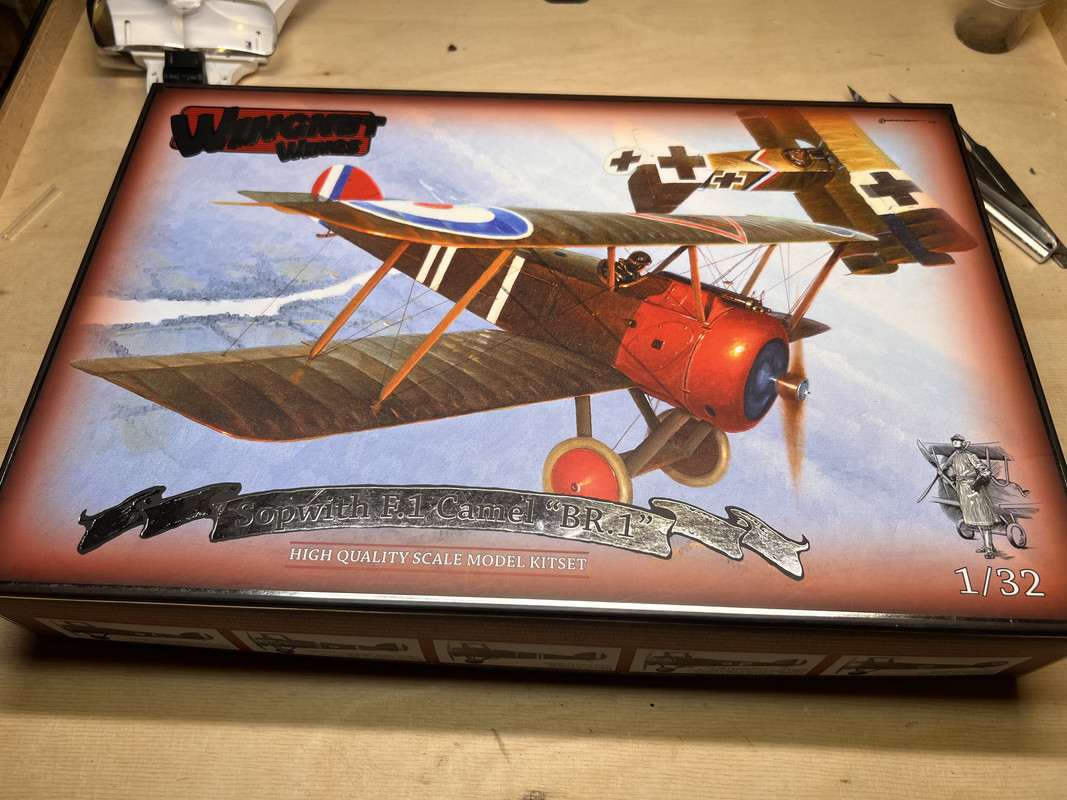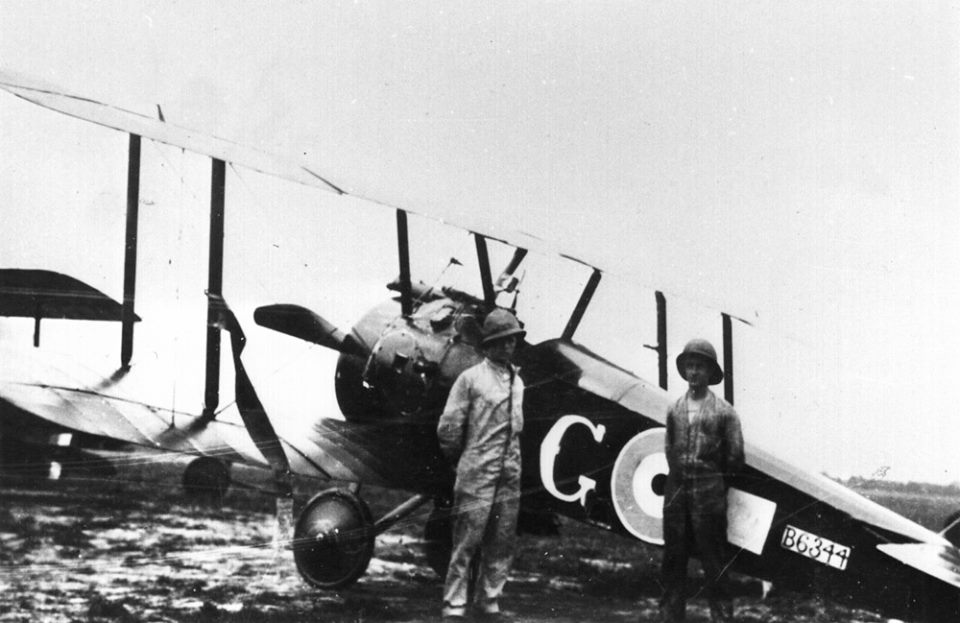Dear all,
Base and figure of my Nieuport XI need time to dry. As I have not given enough drying time, there appeared some strange bleeding-through effects on my wooden base which could be caused by a turpentine diluted oil wash on the groundwork. Looking horrible. I must give it enough time to vaporise entirely before trying to fix this.

In the meantime I took my new project onto the work bench. I need a counterpart for my first Italian Front model, my Berg D. I, and as I cannot feel any motivation to keep up with my once-started Roden Nieuport 27 at the time, I took a WNW Sopwith Camel from my stash.
I am not a Camel specialist at all. So I was surprised that in the end I had five books on the subject:
- Norman Franks, Sopwith Camels Over Italy 1917-1918. Images of War series, 2018
- Norman Franks, Sopwith Camel Aces of World War 1. Osprey Aircraft of the Aces 52, 2003
- Edward Kocent-Zielinsky, Sopwith Camel. Legends of Aviation, vol. 2, 2003
- J. M. Bruce, Sopwith Camel. Windsock Datafile 26, 1991
- J. M. Bruce, Sopwith 2F1 Camel. Windsock Datafile 6, 3rd Edition 2004 (originally 1987)
+ All instruction booklets from WNW for their Camel kits
I want to portray a machine from one of the three Camel squadrons that flew over the Italian front in 1917/18, 28 Sqn, 45 Sqn and 66 Sqn. Long time ago my choice fell on B6344 from 28 Sqn.

The reasons for that are:
1. I have two photos of this machine, the one shown here from the internet and another in Franks, Italy, with Captain Joe Mackereth standing in the way, hiding some interesting parts (not shown here for copyright reasons). Both pics show B6344 sadly only from the left side.
2. Since 2023 when I had decided to build this machine I have the decals for it. It is No. 2 of the Pheon set 32072 Sopwith Camel Aces of the RFC and RAF, vol 1. I do not own this decal set and back in 2023 Pheon had disappeared from the market, so I asked in this forum if anyone would be able to help me out. It is pure coincidence that this happened on April 20 2023.
And I had not to wait for long at all when our member Juan was so kind to send me the decals for this machine for free. Thanks again, Juan! I sadly have not read from him for a long time, I hope he is well.
 Sopwith Camel B6344
Sopwith Camel B6344So before I could start building I needed to do my homework and collect information on the Camel in general and this very machine in particular. I focussed on the two photographs and made a list of characteristics of B6344 that I need to take care of in the build:
- The cockpit opening is cut down on both sides. When I am not entirely wrong, WNW offers parts on sprue A for this. I only have to cut down part B7 properly for this conversion (hopefully!)
- There is a Rotherham petrol pump on the right front interplane strut.
- It has the old landing gear made out of steel tube.
- Painting was obviously PC-10 over all, including cockpit decking and front. Wings and fuselage not only have the same shiny surface but also the same grade of darkness, so I do not believe that the wing upper surfaces were painted with a dull coat of a color -- maybe PC-10, too -- to camouflage this Camel for ground attacks like it is written in the WNW instruction for other Camels. Franks, Aces, shows a color profile on p. 33 and it also shows B6344 in PC-10 all over, and so does the Pheon instruction sheet. There is some color chipping on the cowling and the inspection hatches. Well, this machine was in Frontline service from November 1917 until October 1918!
- It was flown by Captain James Hart Mitchell, captain W. E. Hallonquist, N. C. Jones, P. G. Mulholland, J. Mackereth and Major O. M. Sutton, so it had squadron leader pennants on the struts. Franks, Aces, depicts them as red.
- It had a "normal" Lang propeller without protection canvas wraped around the blades. I can only see dark wood.
- B6344 had a Cooper bomb rack on the photos
- It hat a Clerget engine. This gets mentioned in a review of the Pheon set on largescaleplanes.com. So I have strictly speaking the wrong boxing for my project, as WNW 32070 is for Naval Camels with Bentley engines. But since Gaspatch models offers wonderful 3D-printed engines, I could not care less. I do not own #32074 with Clerget Camels, I only have two boxes of #32070 and a box of USAS Camels. I will cross-check "my" instruction booklet with the online version of the Clerget Camels booklet every step. The one thing I do not know here is if B6344 had a Clerget 9B or a Clerget 9Bf engine. But I am not even sure that there is any difference visible in 1:32 scale. I could not find any differences when I compared the 9B and the 9Bf on the Gaspatch homepage. So I ordered a Clerget 9B version II and a version I.
- As a Clerget Camel it should have had a Kauper interruptor gear. So I need to cut out part B9 accordingly.
- It had the small opening on the upper wing, so I need to use part B5.
- Checking the elevator cables, I am quite sure that I need to use the fuselage halves B1 and B2.
So, now it is time to start. Next time more pictures and less text, promised!